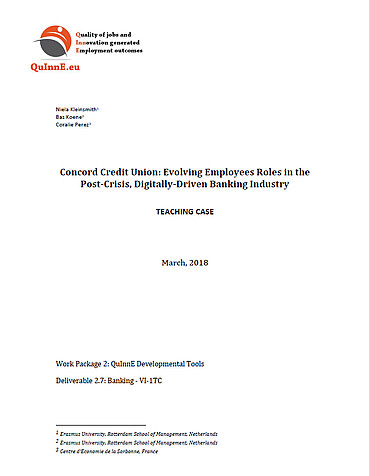Citation Note
Based on field research; 18 pages.
Follow the 'handle' link to access the Case Study on RePub.
For EUR staff members: the Teaching Note is available on request, you can contact us at rsm.nl/cdc/contact/
For external users: follow the link to purchase the Case Study and the Teaching Note.
Abstract
In May, 2017, Paul Beaumont, CEO of Concord Credit Union, one of the largest Euorpean credit unions, or mutualist banks, reflected on how the current evolution of the banking industry would affect his institution. Faced with increased regulation, the need for cost-cutting, industry overcapacity, rapid growth among non-traditional competitors, and increasing customer demands for flexible and digital options, retail banks were navigating uncertain industrial terrain, and needed to decide which would be the surest path for their long-term future. Few banks, if any, had a clear strategic vision. After years of developing increasingly complex products and services, with the resulting financial crisis and subsequent tightening of regulations, banks were now once again focusing their growth efforts on the customer. Restructuring was a given, but how? As a credit union, Concord Credit Union (CCU) was owned and operated by its customers; its mandate was one of solvency and high customer service levels, rather than high profitability, as with most other banks. CCU customers belonged to the traditional side of the banking spectrum, demanding digital options while retaining the need for physical contact with representatives from the bank. But what about the next generation of customers? Growth was now intrinsically linked to a digital offering, much more than to a physical footprint of offices, as had been the case only a few decades ago. How should Beaumont approach the wave-pool of technology before him? The choices he made for the bank's long-term growth would have an immediate impact on his employees, who were also customers and owners of the bank. Which path would he choose, and what would this mean for his company and his employees? Any choice would be a bet on the future.
Objective
1. Describe and explain the current forces acting in the banking industry. 2. Outline the different customer service channels and business models in banking and how these are linked to employee roles. 3. Evaluate different organisational restructuring options and the impact that these are having on bank employees.
